Learn the main difference between shiplap vs tongue and groove, and what you need to know about both when using them for DIY projects!
Tongue and groove vs shiplap can be a bit confusing because they can have a similar end look and are both types of paneling.
I am going to explain what the main differences are between the two and what common traits you need to know about each of them when it comes to using them for DIY projects for the home!
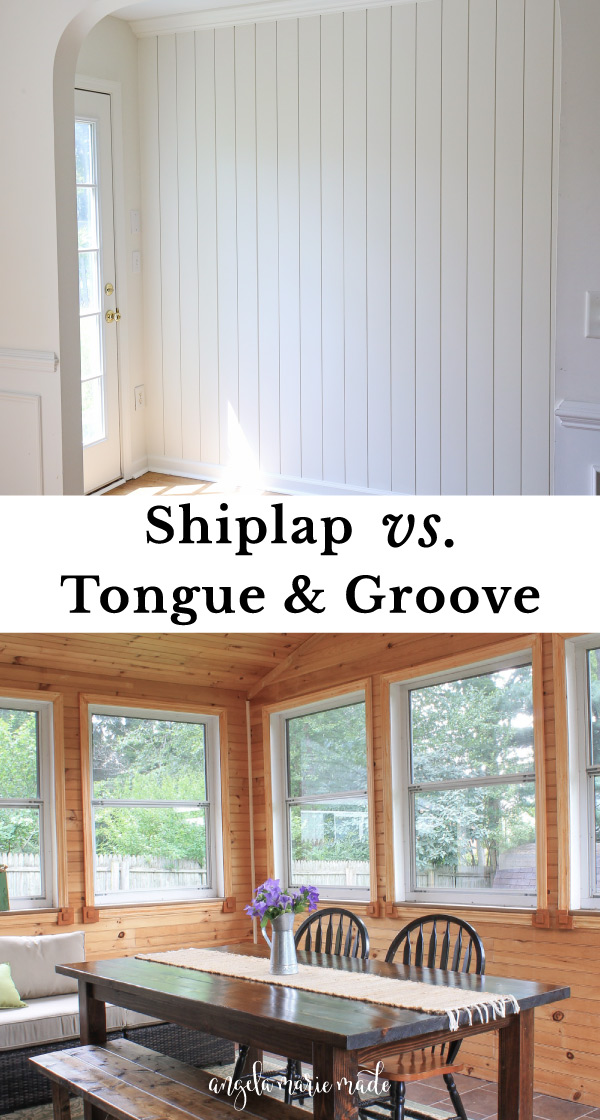
I have used both tongue and groove and shiplap for different DIY projects and they both create a beautiful planked look and they both add a ton of character to any project or space!
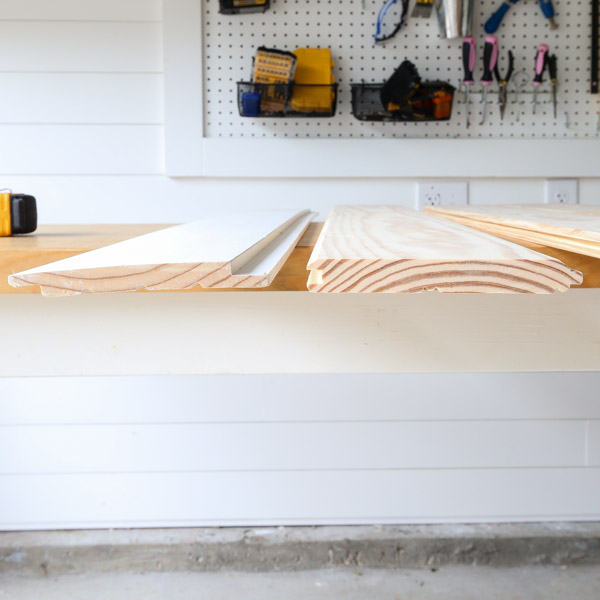
Also, I’ll be sharing common types of DIY projects for both board types below too!
What is Tongue and Groove?
Tongue and groove is a board that has a tongue end on one side and a groove side on the other.

Tongue and groove boards join by interlocking together with their tongue and groove ends.

What is Shiplap?
Shiplap has a rabbet cut or L- shaped groove along each side and joins to other shiplap boards by overlapping with this rabbet joint.
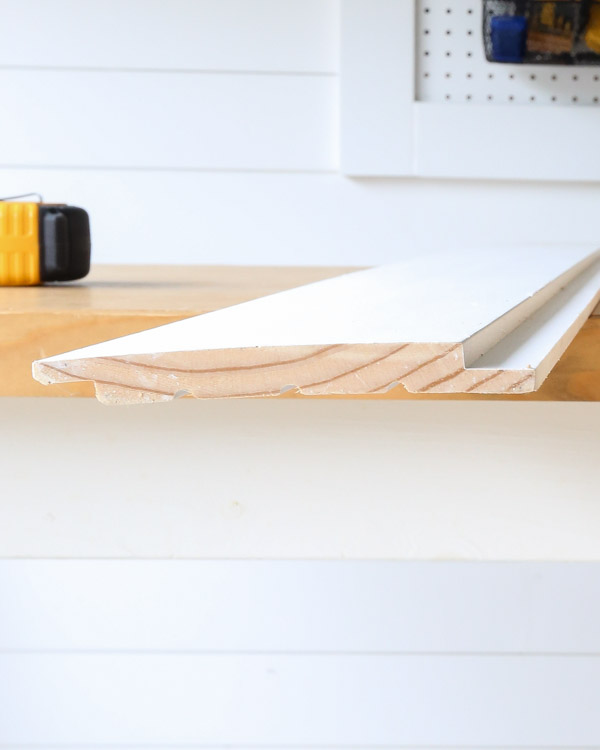

The most popular type of shiplap is nickel gap shiplap as shown in the photos above, which was made popular by HGTV’s Fixer Upper show.
Since nickel gap shiplap is the most popular type, that is what I will be discussing in this post.
The Main Differences and Similarities Between Shiplap vs Tongue and Groove
Joint Differences
The biggest difference between shiplap vs tongue and groove is the way they join together on each side, interlocking vs. overlapping with their different joint types.
Another big difference between the two are that tongue and groove joints are more of a tight fit together where as shiplap is more of a loose overlapping fit.
However, they both need to be secured with fasteners like nails or nails and wood glue to most types of DIY projects. Either one can come apart when using for a project if it’s not properly secured!

Panelling Styles and Design Looks
Shiplap and tongue and groove can both look similar to each other once installed on projects, especially if you aren’t looking at the details. This is why they are often confused with each other.
But, up close, you can really see the difference in the joints of tongue and groove boards vs. shiplap boards when they are joined together on a project, especially when looking at their different profiles.
Note, this post contains some affiliate links. For more info see my disclosures here.
Types of Tongue and Groove Boards
There are many different materials and types of tongue and groove boards.
Material Types
Wood is the most commonly known material for tongue and groove boards. Softwoods like pine and cedar are the most common wood types at the home improvement store for tongue and groove.
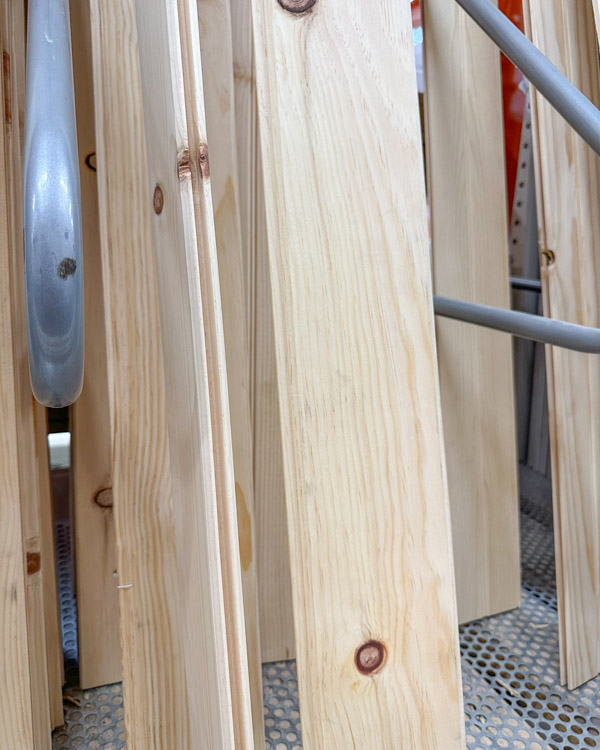
Although wood tongue and groove boards are very common, there are other different types of material that tongue and groove boards are available in, including vinyl, PVC, and MDF.
For example, MDF beadboard planks or PVC beadboard planks, both with tongue and groove edges.
There are different types of tongue and groove joint shapes or profiles that each give a different look or profile. The most common type at the home improvement store is V-groove (or V-joint) like this V-groove board as it’s shaped like a V!

DIY Projects with Tongue and Groove
Tongue and groove boards can be used for any kind of wall paneling, wall planking, or ceiling planking project. They can be installed vertically, horizontally, or at an angle.
Examples DIY home improvement projects include:
- Accent walls
- Wainscoting
- Planking a ceiling
- Lining a closet with cedar planks
- Installing on a covered porch, patio, or sunroom
- Creating a cabin look or cottage look
- Exterior house siding
Here is tongue and groove on an entire porch:
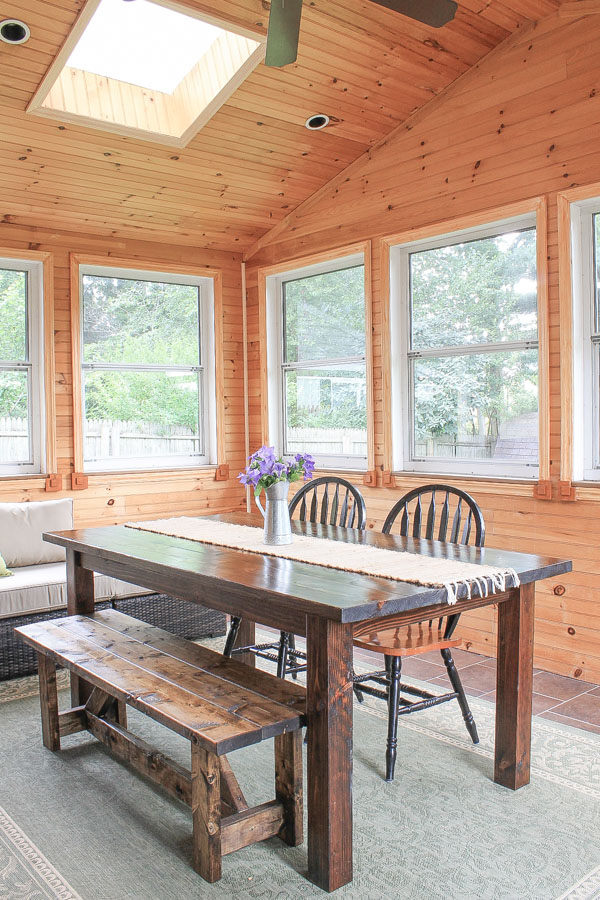
And here is a look at a pretty tongue and groove, cedar, plank ceiling in a bedroom by Charleston Crafted:
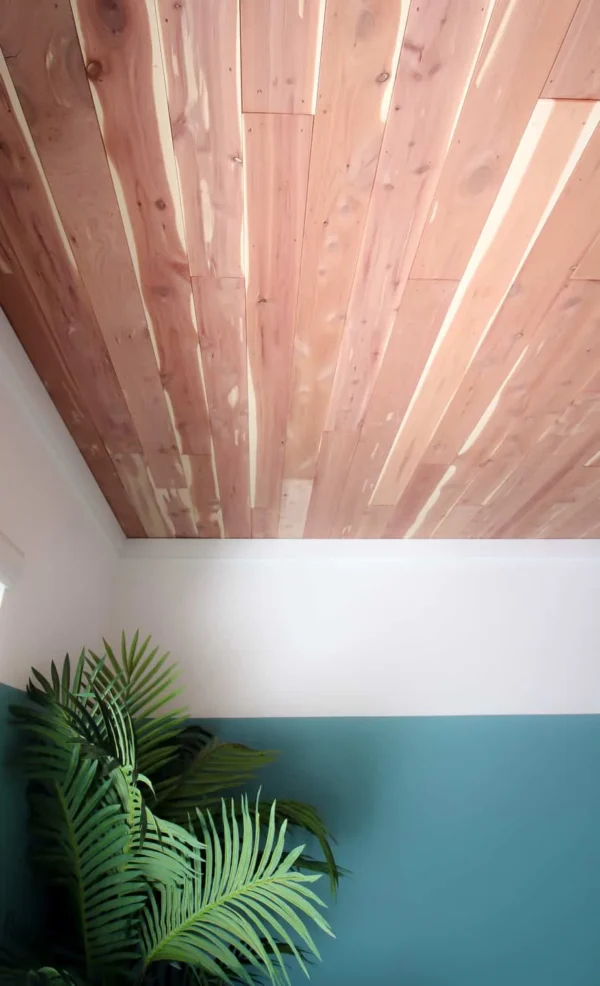
Another great DIY project type for tongue and groove boards is using them for DIY furniture builds!
In fact, I recently used V-groove boards for my DIY headboard. I actually called it a shiplap headboard, not to be confusing, but because they have such a similar look, it was just easier to call it a DIY shiplap headboard than a DIY V-groove headboard haha!
But the headboard could have easily been built with shiplap boards instead of V-groove!
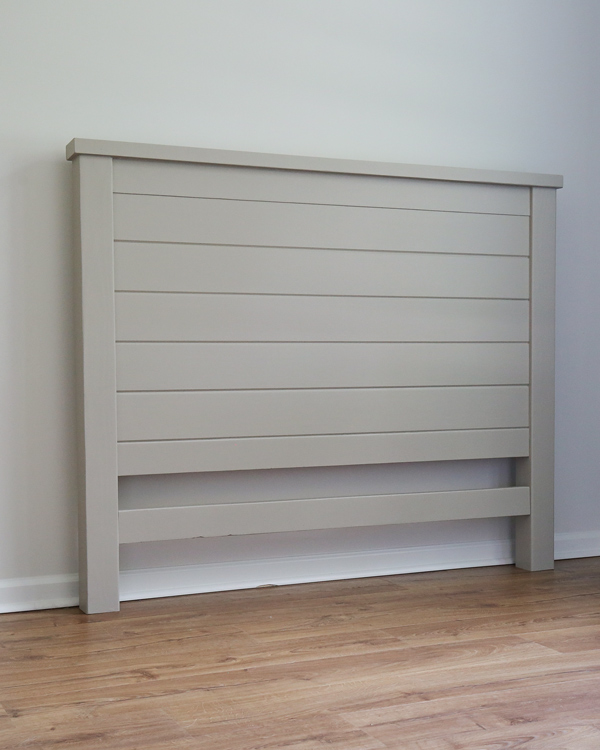
Types of Shiplap
Just like with tongue and groove boards, there are a variety of materials for shiplap. Again wood shiplap is the most common.
Shiplap Material Types
Shiplap is available in wood, MDF, and vinyl materials. Wood shiplap comes in both unfinished (natural wood), primed, and finished options.
It also comes in many different thicknesses, including 1/4″, 1/2″ and 3/4″ thick.
For example, I used 1/4″ thick MDF shiplap boards for our DIY faux barn door with shiplap.
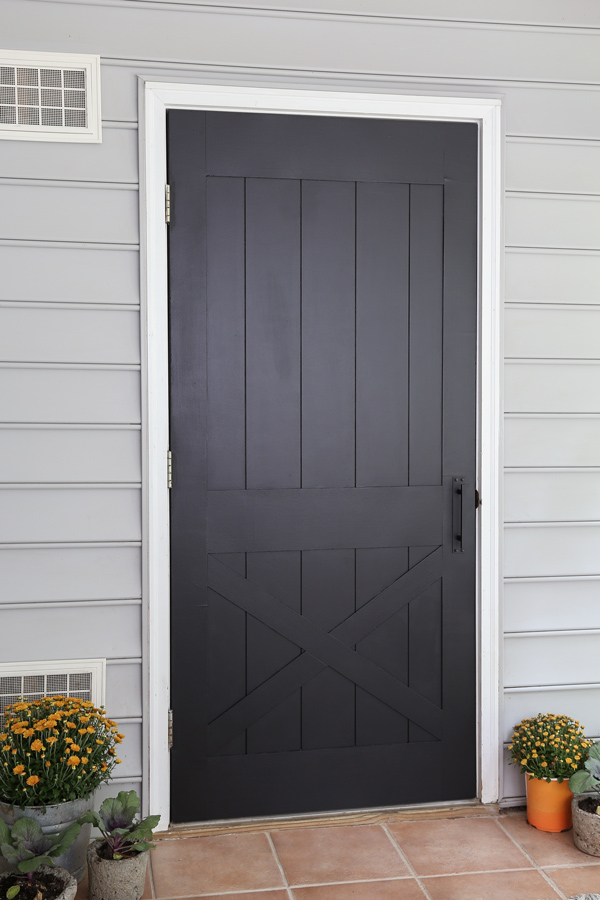
I’ve also used the primed, ready to paint shiplap for multiple DIY projects.
I love these, they save a lot of time on shiplap painting projects, and have a smooth primed finish which looks great once painted.
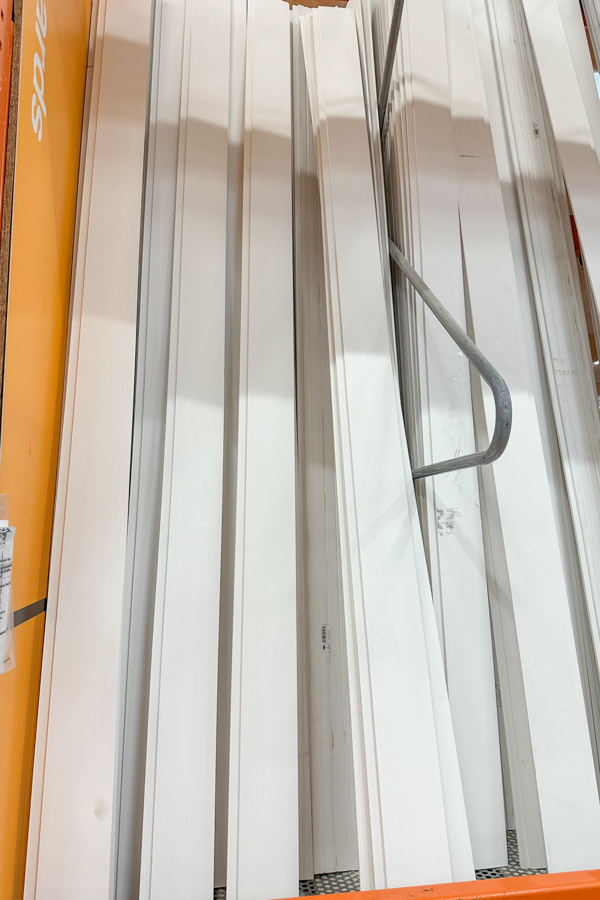
But, you can even get shiplap boards already finished with different stain or barn wood look finishes!
Because shiplap is so popular, there seems to be more options than tongue and groove boards at the local home improvement store and other online retailers.
Shiplap comes with different style joint profiles. A more traditional type is shiplap cladding, for exterior shiplap siding projects.
Nickel gap or shadow gap is the most common and popular as I previously explained. The gap is literally about the thickness of a nickel.
DIY Projects with Shiplap
Similar to tongue and groove, shiplap can be used for any kind of wall paneling, wall planking, or ceiling planking project as well. It looks great installed vertical, horizontal, or angled.
You can also install in as a half wall or part way up the wall like our DIY vertical shiplap half wall.
I loved using it as a wainscoting and ceiling treatment in our DIY bathroom makeover:
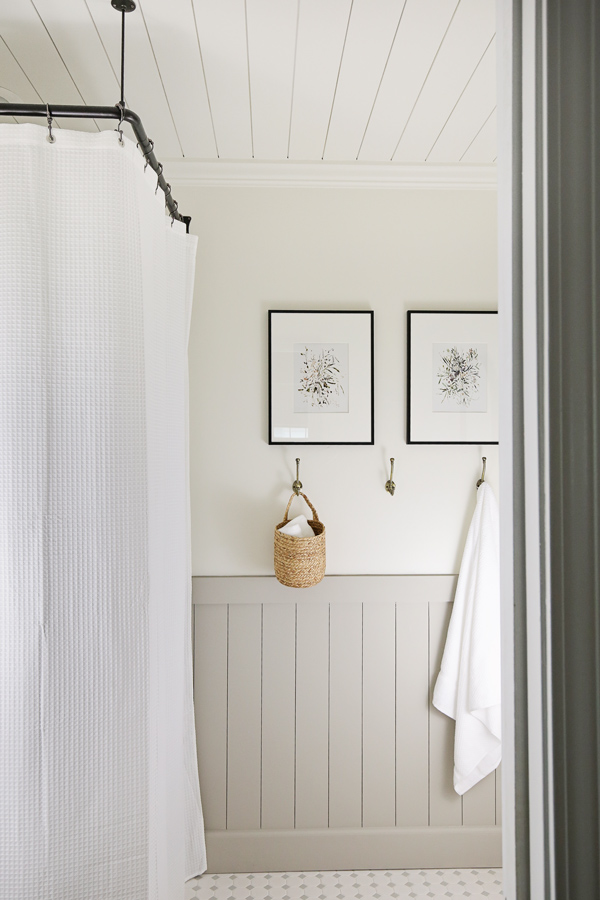
Example shiplap DIY projects include:
- DIY shiplap ceiling
- DIY vertical shiplap wall
- DIY vertical shiplap half wall
- DIY shiplap double barn door with angled shiplap
- DIY faux barn door with vertical shiplap
- IKEA hacks with shiplap
- shiplap fireplaces
- Shiplap kitchen island
- DIY shiplap headboard
- Shiplap accent walls
- Shiplap wainscoting
- DIY shiplap dog bed
Shiplap planks can be used on almost any DIY furniture or interior walls home improvement project! Below I used it for the backing of our IKEA Billy bookcase hack with shiplap:
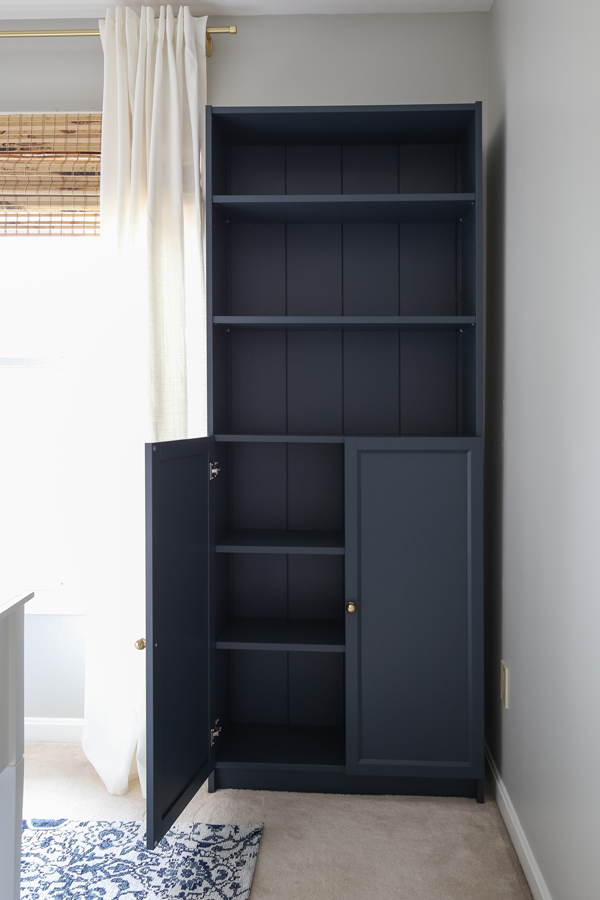
It’s beautiful as an accent wall or on every wall in an entire room! It can be used in any room too, from bedrooms, to kitchens, laundry rooms, hallways, mudrooms, and more!

Shiplap vs Tongue and Groove Cost
The cost of shiplap vs tongue and groove will greatly depend on the material and type of board that you are using. I have found for the same material and quality board, the price is similar and there is not a significant difference in the final cost!
Where to Find and Buy Shiplap and Tongue and Groove Boards
The home improvement store, like Lowe’s and Home Depot, carry most of these common boards. However, your local lumber store will likely have a much better selection and more varieties and styles.
You can find a few options from online retailers like Amazon and Wayfair, but it’s best to buy in person and inspect each board when buying it.
Typically, the boards are bought as individual planks, but there bundle options available too.
Deciding between shiplap vs tongue and groove
For most DIY projects, choosing between a shiplap board vs a tongue and groove board really comes down to personal preference and what you want the final look to be.

Both provide a groove paneling look and either type of board will be a great option for any project where you want to add warmth and character.
Either type of wood board can be sealed with a clear sealant or stained for a rustic look. Or they can be primed and painted for a cleaner look.
Shiplap is the more popular choice and perfect if you are a fan of modern farmhouse style, but the better choice for you will be based on your project needs and look that you want!

Honestly, based on your decor and the way you finish he boards, either one can be made more rustic, farmhouse style or more modern, or even classic!
I hope this explanation of shiplap vs tongue and groove was helpful! Do you prefer one board over the other?
Follow along with all of our DIY projects and for sneak peeks on Instagram, YouTube, and Pinterest!